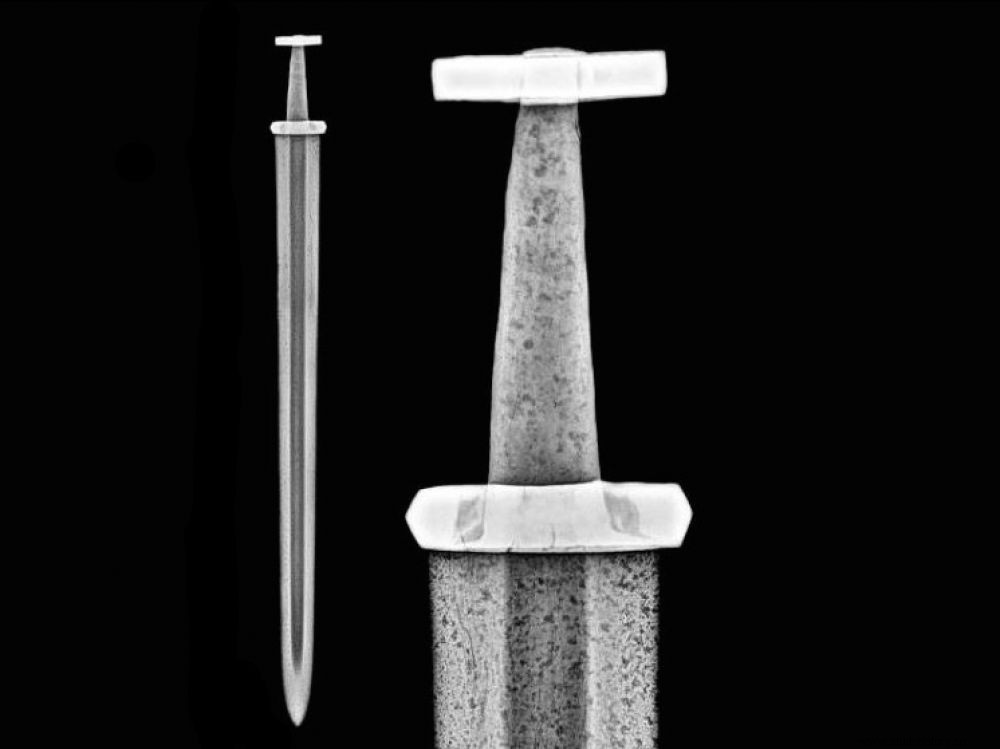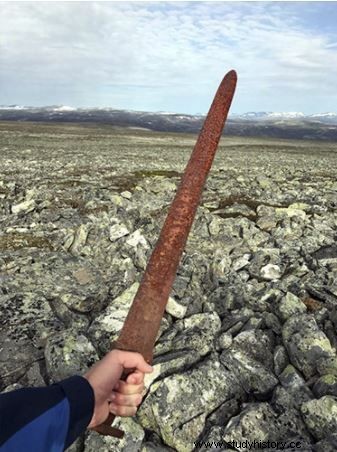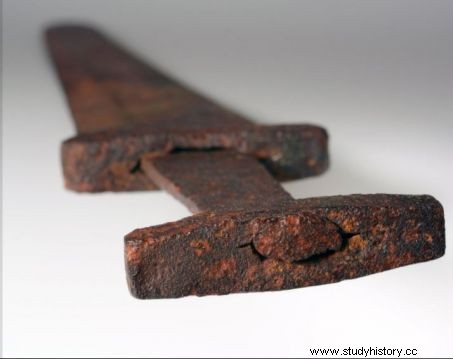A Viking sword discovered in southern Norway has amazed specialists with its state of preservation. Back to his analysis.

X-ray of Lesja's sword, found in the Oppland Mountains, Norway.
It didn't sparkle in the sun like the legendary Excalibur in the hands of Arthur Pendragon, but a 92.8 cm Viking sword recently arrived at the laboratories of the Museum of Cultural History in Oslo, Norway. It was discovered by chance at an altitude of 1650 meters by two reindeer hunters who were surveying a rocky area, in the county of Oppland in the south of the country, in September 2017. "It is the best sword preserved never found in all of Norway! enthuses Vegard A. Vike, an archaeologist specializing in Viking weapons interviewed by Sciences et Avenir.

Lesja's Viking sword discovered in September 2017 in southern Norway. ©Einar Ambakk/Oppland County Council
What that weapon was doing there, no one knows. It may have been lost by its owner almost 1000 years ago during a hunt, when he was caught in a blizzard. The hilt was partly buried in the rubble while the long blade appeared in the light, no doubt due to global warming. By melting the snow, this has in fact resulted for several years in the emergence of vestiges in these mountains (arrowheads, hunting equipment, bows, clothing, etc.) (see box ). The exceptional state of preservation of the wire of the iron blade dated from 800 to 950 of our era, however, intrigued the specialists.

Pommel and hilt of the sword. ©Vegard A. Vike/UIO
Although exposed to frost and snow for centuries, only the leather or wooden protections that covered the handle had disappeared, the blade showing no significant corrosion. To understand the reasons, the researchers carried out analyses. “I first asked Atle Nesje from the Department of Earth Sciences at the University of Bergen to analyze the lichens found on the slide says Vegard A. Vike. This led to the discovery that Rhizocarpon geographicum identified had been actively growing (0.5mm per year) only in recent decades, evidence of relatively recent exposure to air, linked to climate change. “The rest of the examinations relied primarily on X-rays with short exposure times to reveal as much of the internal structures of the blade as possible , continues Vegard A. Vike. Its remarkable preservation comes from the fact that it has never been buried in the ground, and therefore has not suffered the rusting degradation that iron objects usually face .

Exceptionally preserved, the length of Lesja's sword is 92.8 cm for a weight of 1203 grams. ©Vgard A. Vike / UIO
Treasures under the ice
Nearly 2,000 objects from the depths of time have already been restored by the melting ice since 2006 in Norway. Shoes, mittens, bows, arrows and other elements have reappeared in around forty sites located in the mountainous areas of the south of the country, after having spent sometimes more than 2000 years in these giant fridges. The oldest of them date back to the Bronze Age. Since prehistoric times, in fact, these ice landscapes have been excellent hunting grounds for the inhabitants because the reindeer come to take refuge there in the summer to escape the harassment of the flies! Over the millennia, in wanting to trap these imposing deer, hunters have inevitably lost or abandoned some of their equipment. While melting, the Scandinavian plates are a godsend for anthropologists, the situation is nonetheless very worrying. Glaciers in southern Norway could be completely gone before the end of the century. (read The Treasure of Ice, Science and Future n° 794)

Einar Ambakk and Geir Inge Follestad, co-discoverers of the Viking sword in September 2017. ©Oppland County Council
